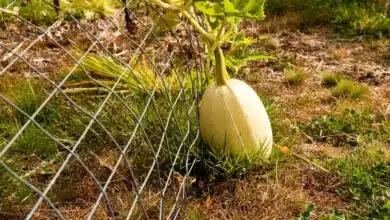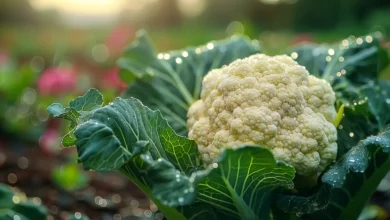Growing carrots is not easy. A carrot bought at the grocery store will never taste as good as a carrot picked fresh from your garden. There are ways to overcome obstacles and grow a healthy carrot crop. Here’s what you need to know if you want to plant carrots in your backyard.
The sweet, earthy roots of carrots make them a delicious snack when eaten fresh. They are also great dipped in ranch dressing or served by themselves. Roasted carrots are delicious, as is adding them to soup. You can also steam carrots and serve them with butter, or bake them into a casserole. The carrot greens can also be eaten and used to make pesto, a sauce or a sauteed dish.
The bright green foliage of carrot tops makes me smile every time I enter the garden. Even in winter, I always feel better when I see those upright, frilly carrot tops, no matter the weather or what else grows in the garden. This alone is a good reason to plant carrots in your yard.
You’ll usually find orange carrots in the supermarket, but if you grow them yourself, you can also raise white, yellow and red carrots, as well as deep purple.
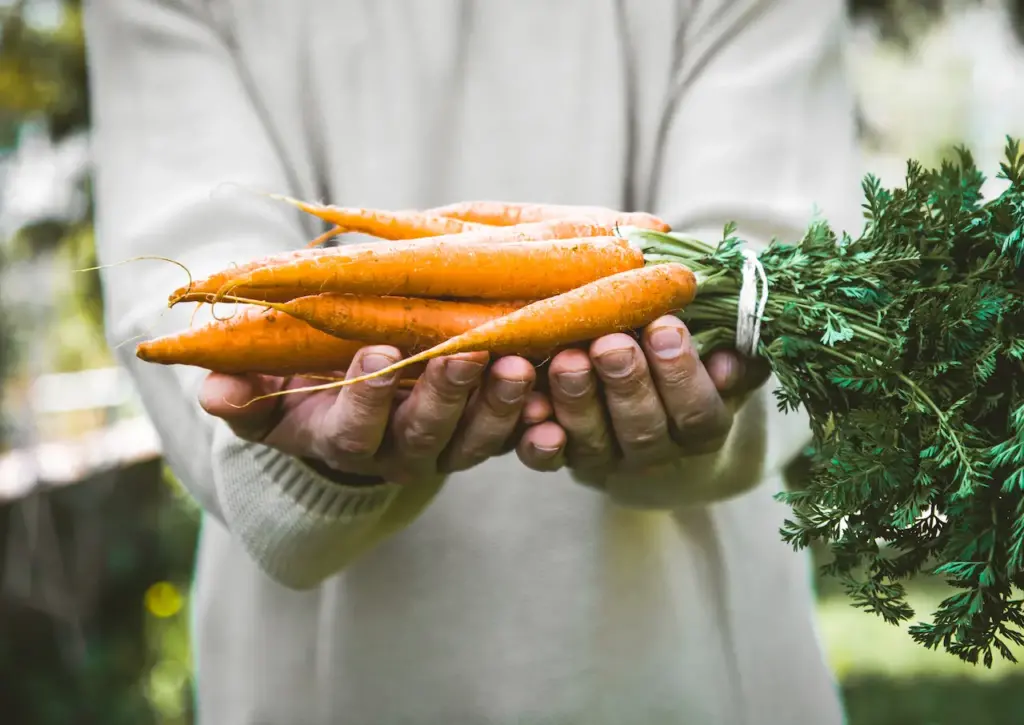
Variety of Carrots
Wild carrots are domesticated and grown in gardens. Wild carrots, also known as Queen Anne’s Lace, are part of the Daucus species. Garden carrots belong to the subspecies Daucus sativus.
- Atlas has a smaller, rounder shape and matures faster than other carrot varieties. It is also better suited to subpar soil conditions than larger varieties. Orange roots have a diameter of 1 1/2 to 2 inches and are about the same length. This variety can be harvested in just 70 days.
- Bolero has improved resistance against common diseases and pests. The roots, which are slightly tapered and orange in colour, measure 7 to 8 inches in length. They mature after 75 days.
- Danvers, an orange heirloom cultivar that can tolerate heavier soils. The roots can grow up to 8 inches. The roots take 65 to 75 days or more if they are grown in the fall.
- The dragon has purple skin and orange flesh. It contains the same amount of lycopene in a tomato. The roots are seven inches long and perform well on heavy soil. They have a sweet, spicy taste. This variety is mature in 70-90 days.
- Imperator, an heirloom variety of carrots that has won the All-America Selections award, is an All-America Selections Winner. Orange roots are 7 to 8 inches in length with a broad shoulder that gradually tapers to a fine root. In 70 days, they are ready for harvest.
- Yellow Moon has roots that are 6 to 7 inches long and have a yellower tone. In 80 days, they are ready for harvest.
- YaYa produces roots that are 6 inches long and have a blunt barrel shape. It looks like a classic carrot, and it is perfect for warm climates where the crop needs to mature quickly. It takes only 60 days for YaYa to reach maturity.
Where, When & How To Plant Carrots
Plant carrots in the spring to harvest them early this summer before the heat makes the plants bolt. At that point, the taproots will become woody and not palatable. Plant seeds 2 to 3 weeks before the spring frost date, then follow with a subsequent planting 3 weeks later. Carrots can also be planted 10 weeks before the first frost for harvest in the fall. I prefer carrots to mature in the fall because they are sweeter after a frost.
The ideal soil temperature to germinate carrot seeds is between 45-85deg Fahrenheit. However, as carrots grow, the soil temperature should drop to 70deg or lower. If stored correctly, seeds can last up to three years.
Carrots are not fond of being transplanted because they have taproots. Carrot seeds are best sown directly in the garden. Sow seeds in fertile soil that is evenly moist and loose. The soil pH should be between 6.0 and 6.8 for carrots.
Prepare the soil well before planting to avoid stunted or deformed carrots. The most important thing to do is prepare the soil well in advance of planting. I work the soil deeply with compost and well-rotted leaves weeks in advance. Remove stones, pebbles, and other obstructions that may obstruct the path of straight roots. Raised beds or deep grow bags work well for carrots because the soil is easier to manage.
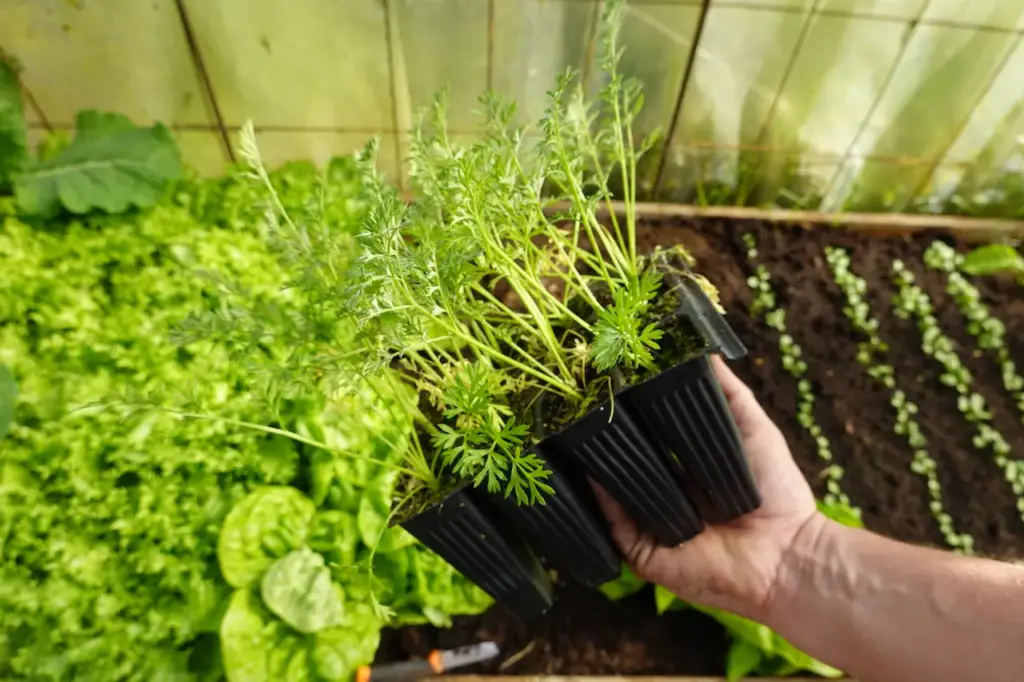
In rows of 12 to 18-inch spacing, sow seeds 1/4-inch deep. This is harder to do than it sounds because the seeds are small, about the size of poppy seeds. I have found that pelletized seed is much easier to work with.
To germinate carrot seeds, the biggest challenge is to keep them moist. It can be difficult because it takes a long time for the seeds to germinate — anywhere from five to twenty days. A trick I use is to cover them with burlap fabric. I use old coffee bean bags. The fabric allows you to water the soil from above and prevents the sun from drying it out. This is important for seeds to germinate. The fabric can be easily pulled back to check the seeds’ growth. Once this is confirmed, it can be removed.
As soon as carrot greens begin to grow, you should take proactive measures to protect them from pests. Install floating row covers as soon as the seeds germinate to keep pests away from your plants.
It’s necessary to periodically remove the row cover to eliminate weeds that compete with carrots for nutrients and water and to thin out overcrowded seedlings. Do your best to only leave one carrot plant per 2 to 4 inches.
Fertilizing Carrots
Avoid over-application of nitrogen fertilizer as it can lead to excessive root growth and root growth. Avoid excess phosphorus as well, since it can cause the roots to split or form side shoots.
Side-dress the carrot greens by adding fertilizer in between the rows once they reach 4 inches. Use a fertilizer with a moderate amount of nitrogen, but little or no phosphorus.
Watering Carrots
It is essential to keep carrot seeds and newly germinated plantlets consistently moist. If Mother Nature doesn’t do the job, keep watering the seedlings every week with an inch. To prevent stress or bolting, the taproots will need more water as they grow deeper and longer. Once carrots have reached half-maturity, increase the watering schedule to two inches per week.
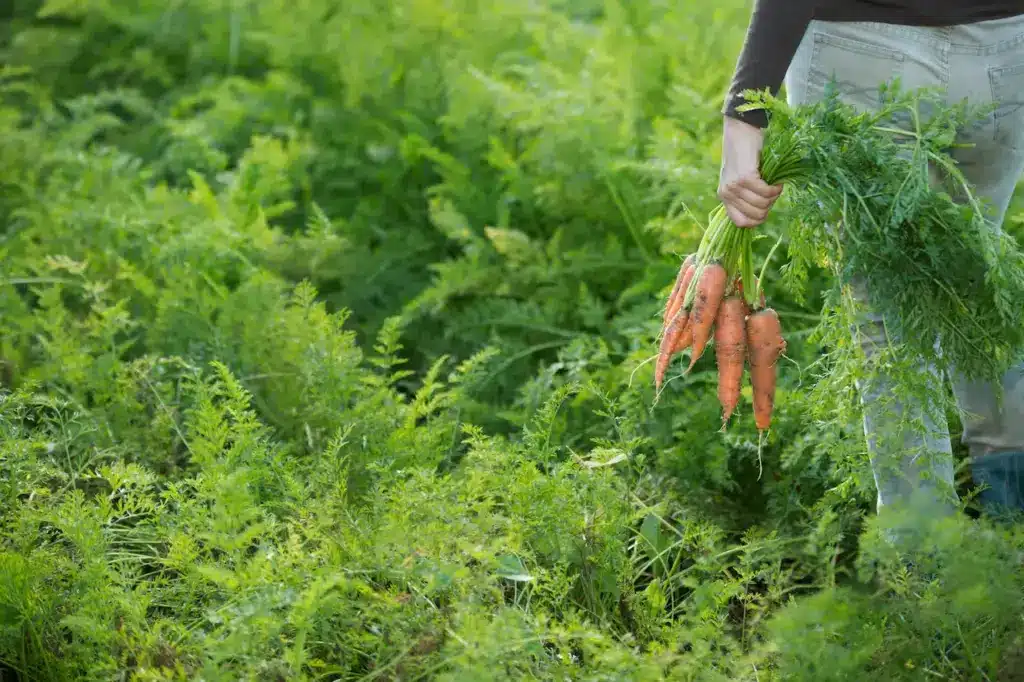
Pests and diseases of carrots
Installing floating row covers on plants will help to eliminate many carrot pests and diseases. This will prevent disease-carrying insects from eating or laying eggs on plants. The row cover is not necessary for carrots because they do not require insect pollination.
By reducing pest and disease problems, you can also reduce the number of problems by controlling weeds.
- The larvae of the carrot rust fly are maggots in a cream colour that feed on taproots. The carrots become mushy due to the tunnels created by the boring activity. Try planting and harvesting carrots earlier to avoid the fly’s peak egg-laying season.
- A carrot weevil can be found on celery, parsley, and carrots. By clearing debris from your garden in the fall, you can prevent weevils from overwintering. Applying beneficial nematodes to soil can reduce the weevil population.
- Flea Beetles cause tiny shotholes in the foliage. The youngest leaves are most vulnerable to damage. Flea beetles can be kept at bay by using floating row covers. Planting a trap crop like radishes is another strategy. Flea beetles are attracted to radishes over carrots.
- Leafhoppers feed on the foliage of carrots and spread pathogens. Row cover is a good way to keep them away from plants.
- Armyworms is a moth larva that loves carrot greens. Handpick the eggs before they hatch, and remove caterpillars that may be black or green. This organic control is safe for humans, pets and other wildlife.
- Root knot nematodes form thickened roots or split roots or clusters hairlike roots. According to a popular myth, interplanting French Marigolds will help repel nematodes. If you are aware of nematodes, it is best to practice crop rotation and refrain from planting nightshades for at least three or four consecutive years. This will help reduce the nematode populations.
- Wireworms can live in soil for up to six years before becoming adults. The wireworms are between half an inch and three inches long. They can damage or kill seedlings of carrots, and they can also harm plants at a later stage in their growth. Put a potato 4 inches into the soil to mark it if you suspect that your garden is infested with wireworms. Dig up the potato after a week and check it for wireworms. Wireworms can’t be controlled while carrots are growing. However, in the weeks leading up to planting, you can turn soil multiple times to expose wireworms.
- Black Cankersymptoms are black, purple or even brown root lesions that appear mainly at the shoulders and crown of carrots. On the carrot foliage, small rusty lesions will be visible.
Harvesting Carrots
The carrots will become sweeter after a few frosty periods, because the colder temperatures make them store sugars as energy.
Carrots should be harvested within three weeks after they reach maturity. If the soil is loose, pull carrots up by their tops. If the carrots break during harvest, use a garden fork to loosen the soil. Cut the top growth of the carrots one inch away from the roots once they are harvested. The carrots can be kept in the refrigerator for up to two weeks. However, they are best eaten as soon as you get them for that crisp, fresh flavor.
You can also keep carrots in the ground in cold frames through winter.


